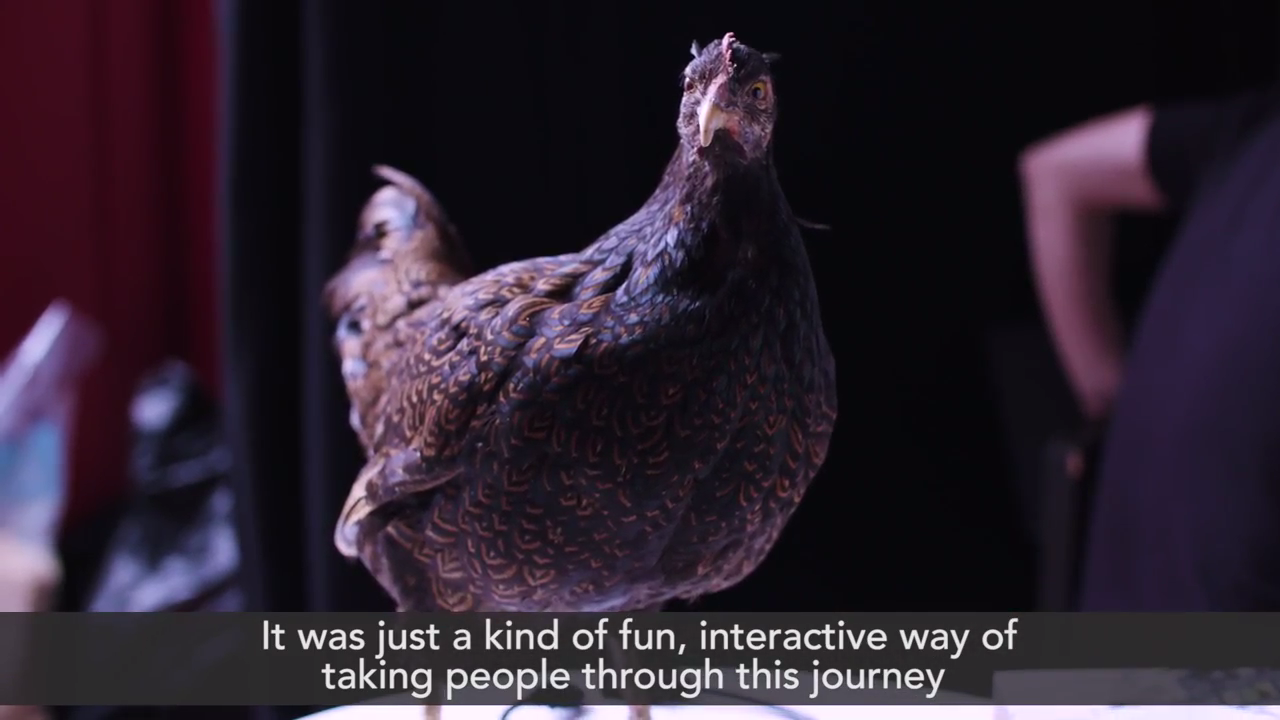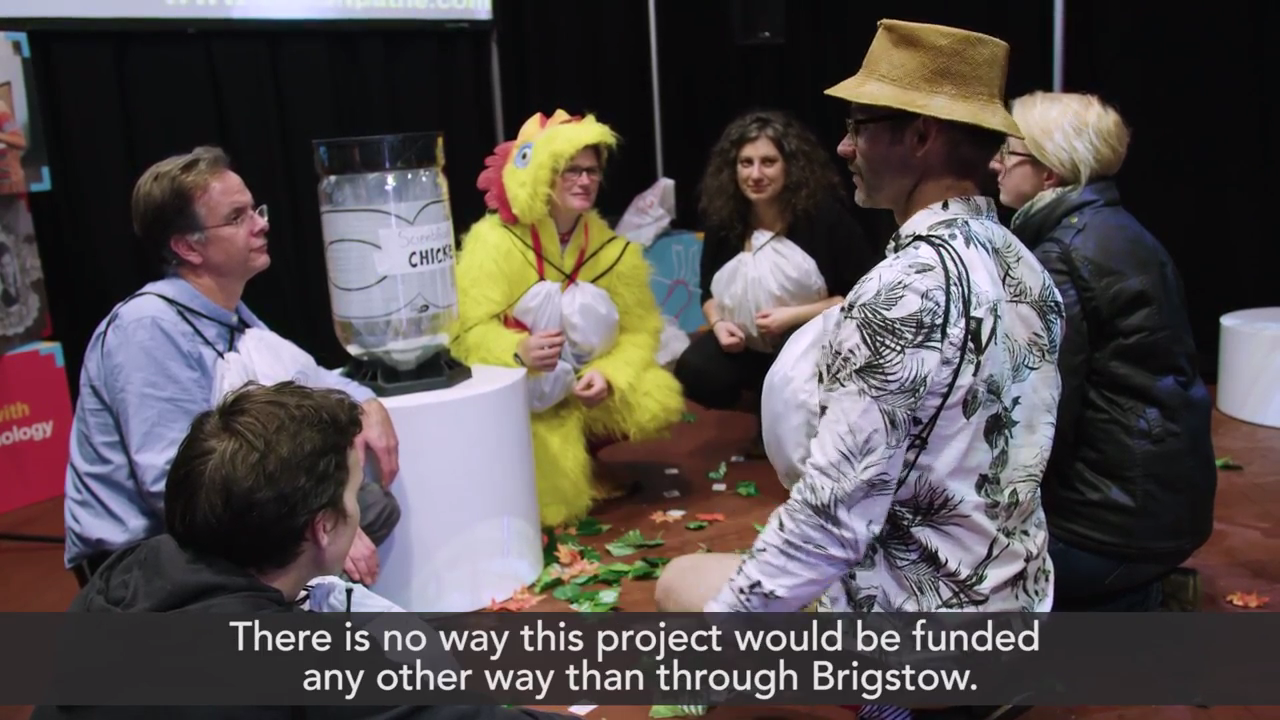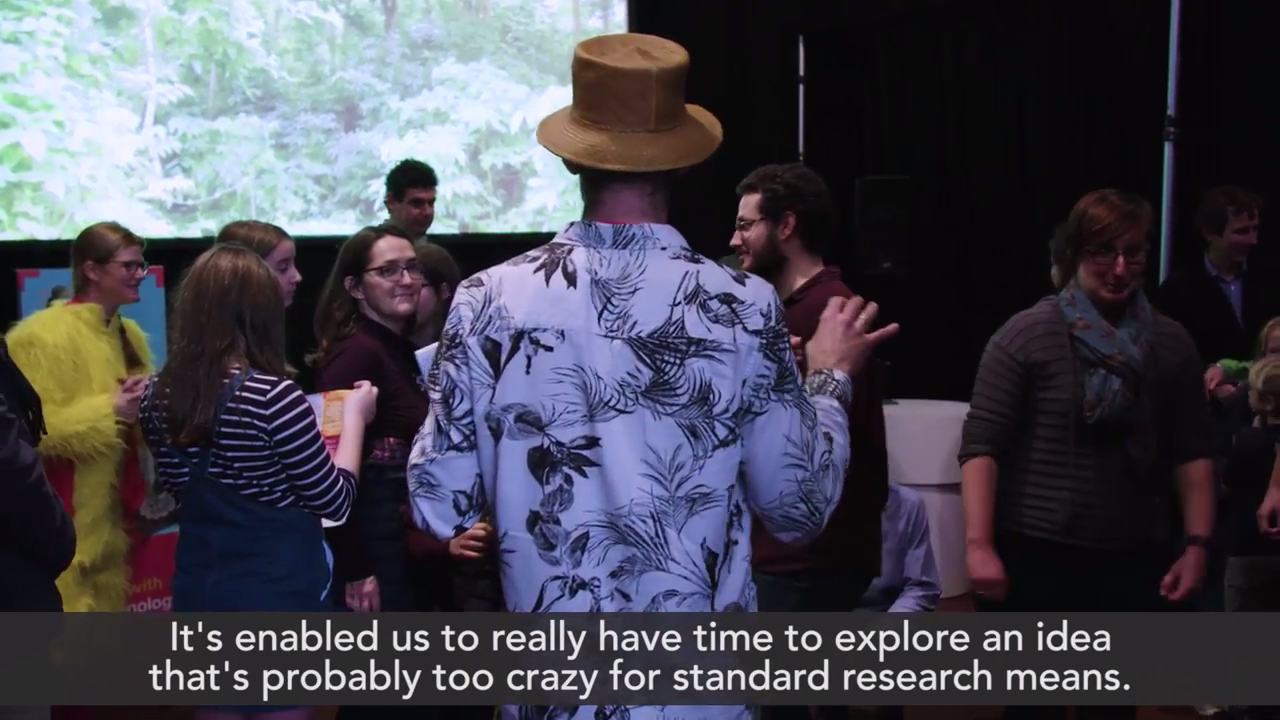The Life and Death of a Food Chicken
What does ‘eating well’ mean in the context of killing animals for food? What can a cultural approach can bring to animal welfare assessment?

What did the project involve?
This multidisciplinary research project followed two individual farm chickens through the final phase of their life, to slaughter and eventually to the plate. Both chickens were living on commercial farms, one on an organic farm and the other on an intensive broiler unit. The project was unique in documenting the experience of a human living with each chicken, and exploring people’s reaction to the end-of-life experience of farm animals through these individual birds.
To eat well humans need their food to contain particular attributes. Beyond the basic nutritive and safety requirements each person has other values which bring them greater well-being, or can detract from their enjoyment of food. In this project the team explored what eating well means to people in the context of killing animals for food, and what a cultural approach can bring to the assessment of welfare of food animals.
This project focused on two driving research questions:
1) What does ‘eating well’ mean in the context of killing animals for food?
‘Eating Well’ is as much a cultural as it is a physiological concept: it speaks in a general and vague sense to culturally defined norms of what is desirable and undesirable in food. Modern, western food cultures have developed highly polarised narratives around the consumption of animals. While the explicit decision not to eat meat often centres on the inevitably of animals’ death, the issue is invariably ignored or deliberately obscured. This project sought to examine how this question might be re-centred – in a non-partisan manner – in debates around food and eating.
The team achieved this through:
- A creative piece focused on the end-of-life experience of a food animal
- A workshop/exhibition/intervention that challenges participants to consider their responses to the piece, and to spark a conversation around the hidden reality of death within our food.
2) What can a cultural approach can bring to animal welfare assessment?
Animal welfare science has developed methods for assessing the welfare of both individuals and groups of animals. Many on-farm techniques are constrained by the time available for assessment and utilise short observations and/or management records. Alternatively, for research purposes, focal animals may be followed remotely through video observations. Here the project aimed to understand the value of embodying the life of a chicken to a degree never employed before for welfare assessment purposes. The researcher Siobhan Mullan lived with the chicken in its flock for its final 24hrs, was led by its motivations and evaluated its welfare. The team also underwent a historical study, focused through Robert Skinner’s expertise, investigating the experience of a food chicken through the ages.
Who are the team and what do they bring?
- Siobhan Mullan (Bristol Vet School) is a veterinary/welfare scientist who has spent nearly two decades researching how best to assess the welfare of farm animals and the ethical issues around their use.
- Robert Skinner (History, University of Bristol) is a historian with a range of experience in social and political activism. Their recent research interests have been focused on the politics of food consumption.
- Andrew Flack (History, University of Bristol) is a historian with a vast array of research into human relationships with animals and their environments, particularly in the context of zoos.
- Paul Hurley (BV Studios) is an artist who works in performance, participation and in collaboration with other artists and researchers. They have made a variety of performance work as, or in relation to, non-human animals, and they have worked as a researcher on a project studying men, meat and sustainable diets.
What were the results?
The team worked collaboratively to explore the performative aspects of interdisciplinary animal research – what does it mean to imagine the life of a chicken? How does that relate to lived experiences of food? Of living and dying? Through a series of experimental field trips, the team developed a toolkit for ‘becoming-chicken’ – how we might move, eat, sense like a chicken – as well as a playful frame through which to present it. It took the form of an interactive performance that took place at the Brigstow October Showcase. While we might never know what it is to be a chicken, the researchers asked what can our attempts tell us about humans’ relation to food animals?



The field trips were undertaken alongside food chickens – from domestic hens, to an organic farm and a commercial chicken farm – and documented using photography and video. Taking a practice-based research approach, the team produced written reflections and conversations to draw out key points, and translated them into an exhibition form. This included writing, photos, video and drawings, as well as artefacts and audio recordings, shared on a project blog. One of the key productions was a historical film on chicken farming. This film explored the experience of a food chicken throughout the ages, and into a (hopeful) future.
Siobhan Mullan and Paul Hurley developed this project further into a UKRI funded project for 3 years titled ‘Christian Ethics of Farmed Animal Welfare‘

